It’s a very interesting process, proposing, waiting for acceptance, and finally writing articles for newspapers in our region. Waiting for answers and results is similar to waiting for spring, sometimes in a cold and snowy time.
NJWILDBEAUTY readers know I recently had a story on trying to justify or find gifts in extreme cold turn into an op ed in the Times of Trenton. You can search for this a few posts ago on this blog. On line, they used Brenda Jones’ superb photo of a fox scampering across Carnegie Lake. In the Times itself, they used my unmet friend, Michael Mancuso’s, outstanding scene of people by a completely ice-clotted Delaware River. I owe this op-ed breakthrough to Michael, who said my feeble attempt to justify prolonged cold (it kills microbes that cause mange in foxes) deserved a Letter to the Editor to the Times. He was right, only the Letters Editor chose to move it to Op Ed with images.
[I’ll use a couple of Brenda’s photos in this blog, one of Anne Zeman’s beautiful hand, do not have access to Michael’s frozen Delaware, and the rest are mine during desperate springquests at Bowman’s Hill Wildflower Preserve below New Hope.]
What readers never see is all the proposals that are ignored, sometimes not even acknowledged.
Every once in awhile, an idea strikes home, as with Rich Rein and Recognizing Spring, published yesterday in US 1 Business Newspaper. My response is parallel to finding first ferns at Bowman’s.
Fern emergence at the fern trail, despite snow everywhere at Bowman’s, proves that spring is inevitable.
Awhile ago, Rich Rein, Editor and FOUNDER of US 1 Business Newspaper, asked me, at his generous thank you party for their writers, for a piece on finding spring. I agreed, of course. Wrote it in the midst of consummate ice and snow, and secured my dear friend Anne Zeman’s images for Rich, in a potpourri of portraits of the tiniest, most elusive, most delicate spring blooms.
You wait and you wait. Then the answer is yes. Then there’s uncertainty about timing, about images. And then it comes out a week earlier than you’d expected, with only one of Anne’s pictures.
Instead of being a Field Guide to Early Spring, with all that delicate beauty Anne had captured so skillfully, the piece showed one barren scene of a tough skunk cabbage.
Being a writer, especially a journalist, is like being a gambler, And the money cannot matter. You toss your ideas into the atmosphere, and they swirl about and create new patterns, often those you never expected.
I’m thrilled that it came out yesterday, so I’ll block and copy for you, urging you to seek spring in your own neighborhood. You can use the COMMENT feature on NJWILDBEAUTY to let me know how YOU know spring is indeed here.
One skunk cabbage does not a spring make!
One of the privileges of hanging out with naturalists is that they know where to find first signs of spring.
One of the disadvantages is that they know the names of everything, leaving you wondering if you’ll keep the difference between twinleaf and bloodroot this year.
Bloodroot and New Leaf Fall, Bowman’s
If you’re lucky enough to have naturalist/photographer friends, your lessons will be a merry marriage of art and science.
If not, you may use these images as a field guide to earliest ephemerals.
One of my favorite nature-questers is Anne Zeman of Kingston. Consummate birder and fine art photographer, she is one of the most alert to signs of changes of seasons. Recently, in a white world, we motored to Bowman’s Hill Wildflower Preserve (just south of New Hope). We required a sighting of the truest, earliest spring herald — skunk cabbage. We know where this hideously named flower pierces ice, melting its way to light and first pollinators. The plants pungency attracts flies, thinking it’s carrion. Because it can achieve 60-degree “furnace” inside those waxen red/green leaves, skunk cabbage has been known to erupt in January.
On our day, we were hindered by snow and ice. Anne and I could make it as far as the Civilian Conservation Corps stone bridge,. Despite serious hiking gear, we could not pass on to Azalea Trail or Violet Trail, let alone achieve the old pond where the skunk cabbage waits. Pidcock Creek chortled at these two nature-deprived humans, desperate for spring. But you can maneuver Bowman’s Trails now and find spring heralds of many hues and moods.
On the road leading down into Bowman’s from the parking lot, spicebush awaits. In “just spring,” or maybe even before ee cummings’ version of this season, petite blossoms the hue of key limes spurt, acting as spring signals even deep in the forest. Bowman’s has an identifying sign below this shrub by the roadway. Scrape a ruddy spicebush twig with a thumbnail, then inhale deeply . A pungent healing fragrance pierces your nostrils, that of benzoin, part of spicebush’s formal name.
There is no more incontrovertible sign of spring than courting eagles. In Salem and Cumberland counties, near Turkey Point and along Stow Creek, particularly, American bald eagles begin courting in January. We can watch our `own’ eagles, soaring with straight-winged majesty over Carnegie Lake. If you’re lucky, you might even hear them caroling their surprisingly light songs of love. Princetonians can see eagles carrying enormous branches to restore their 2014 nest. By now, they are very likely performing nest exchanges, keeping new eggs warm. It’s even more important to eagles that Carnegie Lake thaw, for fish are the mainstay of their diet. If you’re very lucky, usually near the dam or the fishing bridge, you can marvel at an eagle’s shining meal deftly clenched in bright talons.
In Princeton, start your spring quest along our towpath. Spring Beauty will soon blanket its banks, — tiny, white and frail. They actually shiver as we may in the search. But when sun rays reach these silken blooms, they are teased open to reveal thinnest stripes of strawberry/pink. It’s as though someone painted them with a brush of only one hair. These bright accents serve as illuminated runways for pollinators, which is what spring is all about.
A shy harbinger of spring will be early saxifrage. The marvelous name means `rockbreaker’. Fragile as it looks, saxifrage can force its way through stony soil, as over at Bowman’s Hill, as inevitably as skunk cabbage pierces ice.
My candidate for the ephemeral with the ugliest name is cutleaf toothwort. This dainty one blankets the sharp edges of Bowman’s steep trail from their Twinleaf Shop, where one pays nominal admission. This trail has been newly strengthened, post-Sandy, so that it is easily negotiated, down to the site that will be awash in bluebells a month from now. Meanwhile, Dutchmen’s breeches, squirrel corn, and cutleaf toothwort keep the hiker occupied in early spring.
Plants with `wort’ in their name hearken back to the Old English. `Wort’ implies medicinal usage. Maybe this delicate beauty was useful for toothache. Wikipedia asserts, “the first part of the word denoting the complaint against which it might be specially efficacious.” Toothwort is pale, seemingly white, but in certain lights there is a roseate quality, and sometimes even a hint of lavender.
The most famous medicinal plant of early spring could well be hepatica. Obviously, in ancient times, anything with `hepatic’ in its name was significant for liver ailments. I find this a somewhat heavy association for one of the most delicate plants.
Hepaticas thrive at Bowman’s. You can read wall maps and hand maps, and inquire of wise volunteers in their Twin Leaf Shop, The miracle of this hepatica is that these fragile blossoms emerge first. Finding a swathe of hepatica poking through last autumn’s leaves always seems a mirage.
Round-leafed hepatica and the other flowers that bloom until the forest canopy leafs out, work their spring magic, year upon year, wherever humans are wise enough to preserve the habitat they require.
Take yourself to the towpath, to Bowman’s, to the Abbott Marshlands, the Pole Farm in Lawrenceville (off Cold Soil Road), the Institute Woods, the Griggstown Grasslands.
Meanwhile, you will be assisted in your quest by Anne Zeman’s splendid photographs, in her upcoming book on the wildflowers of New Jersey.
Edelmann, a poet and naturalist, is also community relations associate with D&R Greenway Land Trust. She writes and photographs for the nature blog, njwildbeauty.wordpress.com

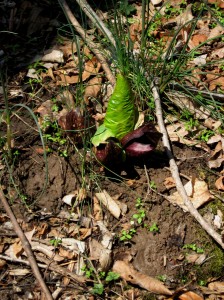
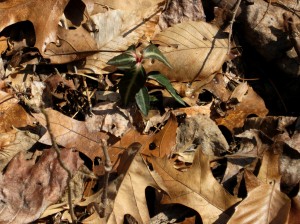
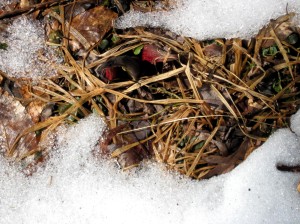
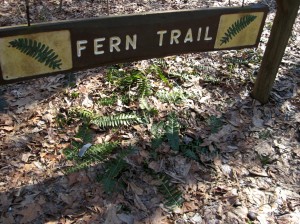
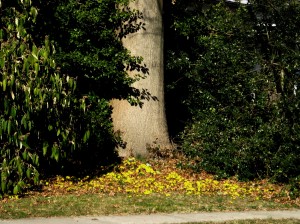
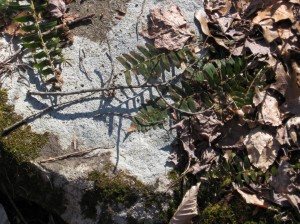
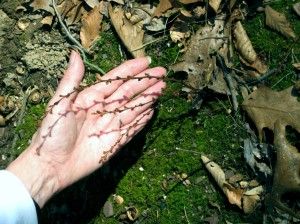
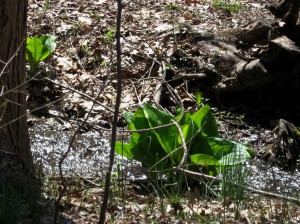
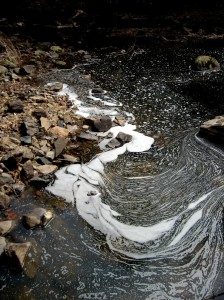

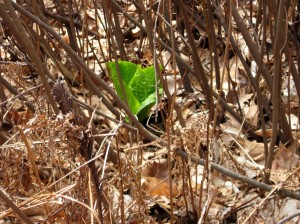
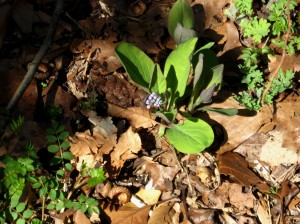
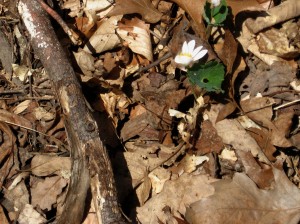
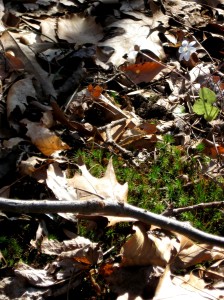
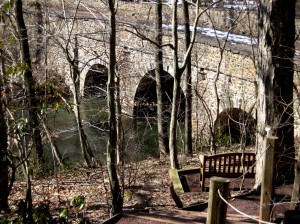
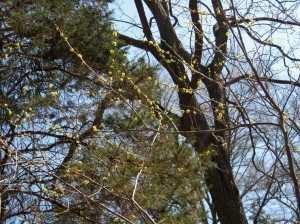
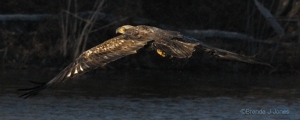
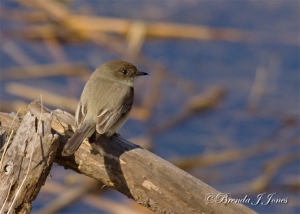
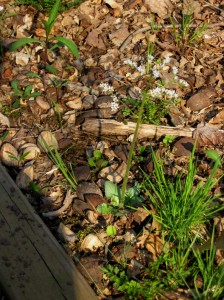

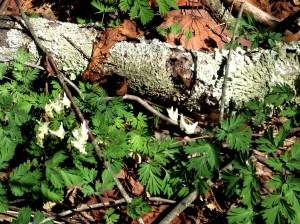
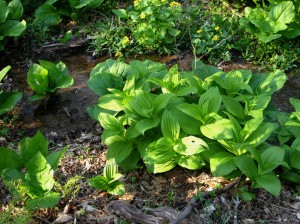
Nice to see the photos!
Congratulations on your published article. It’s exciting that spring is just around the corner. Thanks for showing us the first shoots of green. “Dutchman’s Britches” is such a cute name. I’ll have to look that one up! Brenda
Cliff and Brenda, thank you, as ever for commenting – and, Brenda, always for your spectacular nature images. Your enthusiasm for nature keeps ME going….
‘britches’ may be spelled ‘breeches’ — they’re endearing plants and bring up thoughts of mystical faery folk in the forest whenever I see them
blessings, c
Penelope, I well remember our ritual trips to Bowman’s, sometimes every other week, ‘in just sprint’. It’s pouring show as I write this thank you to you, for all those memories, and your welcome commehts. c